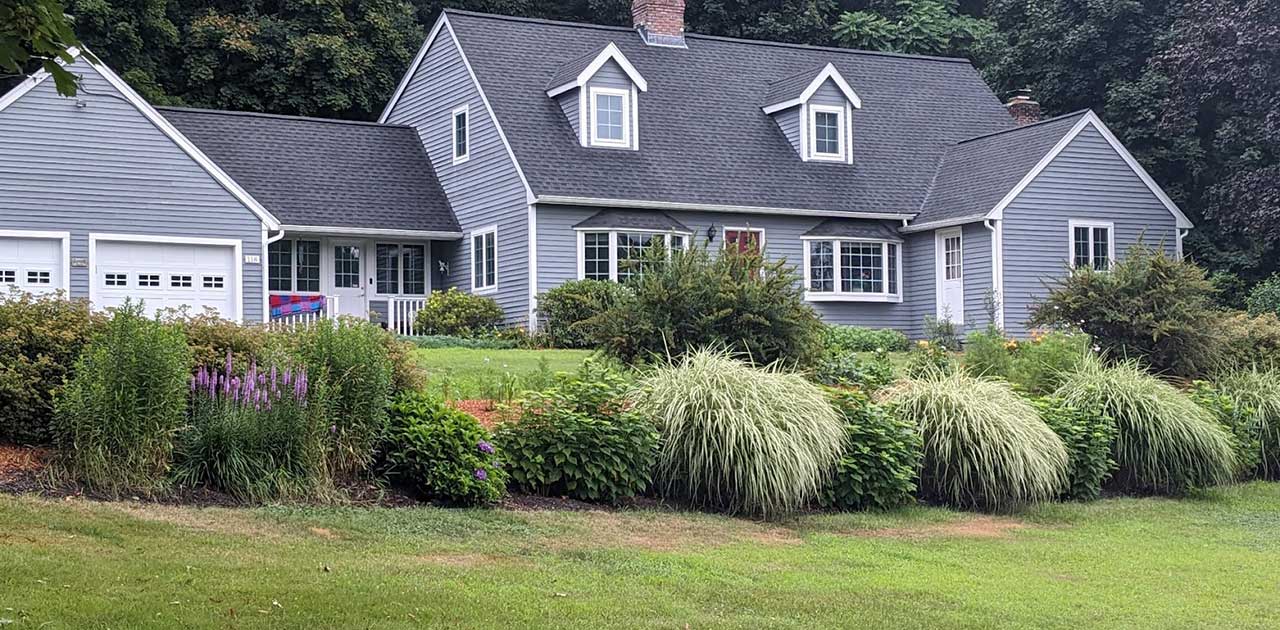One of my favorite landscape plants is also one of the least ornamental while it’s growing. However in the winter when it’s gone by and covered with a glistening cover of crystal ice it can look as beautiful as a Faberge egg. What is this plant?
Plants is more like it – they are a family of plants known as ornamental grasses. They are very subtle and start in the spring as foot-high mounds and end the season sometimes as tall as 10’ screens. Their beauty is very subtle and comes from their artistic placement for texture, colors and form.
There are three design uses where they shine.
- separate different color groupings
- soften edges while still allowing clear definition
- blend boundaries from a hard line to a mottled line
Best for informal landscape designs
No matter how much you do to them they tend to look kind of ragged and rough. Because of this don’t introduce into any landscape where you have formal lines. It would be akin to purposely adding a cowlick to someone’s haircut.
Best when planted en masse
Most look best when used in masses or individually tucked-in next to a large stone. They don’t look good as an individual specimen standing out on their own. When planting them, be sure to place the smaller growing ones in front so as not to hide them with the taller ones.
Broadleaf shrub background works
Broadleaf evergreen shrubs such as azaleas or rhododendrons make an excellent back drop for the grasses. They fill the void when grasses must be cut back in the spring (pick a nice warm day in March).
Fine textured shrub background not so much
Evergreens with fine textures, such as arborvitae or hemlock tend to disappear next to grasses, so the combination should be avoided if possible.
Like most grasses they’re easy to grow
Most ornamental grasses are very easy to grow and to propagate. I’ve had the best results when planting them in the fall. While they can grow in almost any medium, they will do best in soil mixed with compost or leaves and a little 10-10-10 fertilizer thrown in to the bottom of the hole.
Once they have become established, usually one full seasonal cycle, you can dig them up in the spring and separate them with a sharp shovel and replant to further fill-out your landscape plan.
During the growing season they should be relatively care free and may need a little water during really dry spells.
Winter months especially interesting
Ornamental grasses don’t drop foliage during dormancy. So they provide all season beauty, shape, color, texture, and movement throughout the bleaker seasons when all other plants have gone by.
They are especially interesting in the winter months, even when there is no snow on the ground, because they move in the wind and add interest where there ordinarily wouldn’t be any.
Some suggestions of grasses for Sudbury
Some of the common varieties that grow here in Sudbury are natives to the southwest and will do very well in low-water situations.
Needlegrass is one of the ones you see most often in landscapes. It grows approx. 3’ tall and has a tan color and looks best planted in the background. Little kids love running through a it – makes them think they’re on the great plains chasing after buffalo.
For low plantings try blue colored wheatgrass or blue fescue festuca. Both having a steely blue color that complements most other plantings handsomely and it is very rustic looking,
Besides being a really good gardener, Mike Hunter is an excellent RE Broker.
Text or Call Mike 978-580-1069 today.
His clients appreciate his commitment to delivering a streamlined, results-oriented deal every time.
People also ask about Sudbury Stuff
80% of my business comes from referrals and repeat customers.
Please feel free to send my profile to others you feel would gain from my services or learn more about how we can help them Sell with Confidence.

